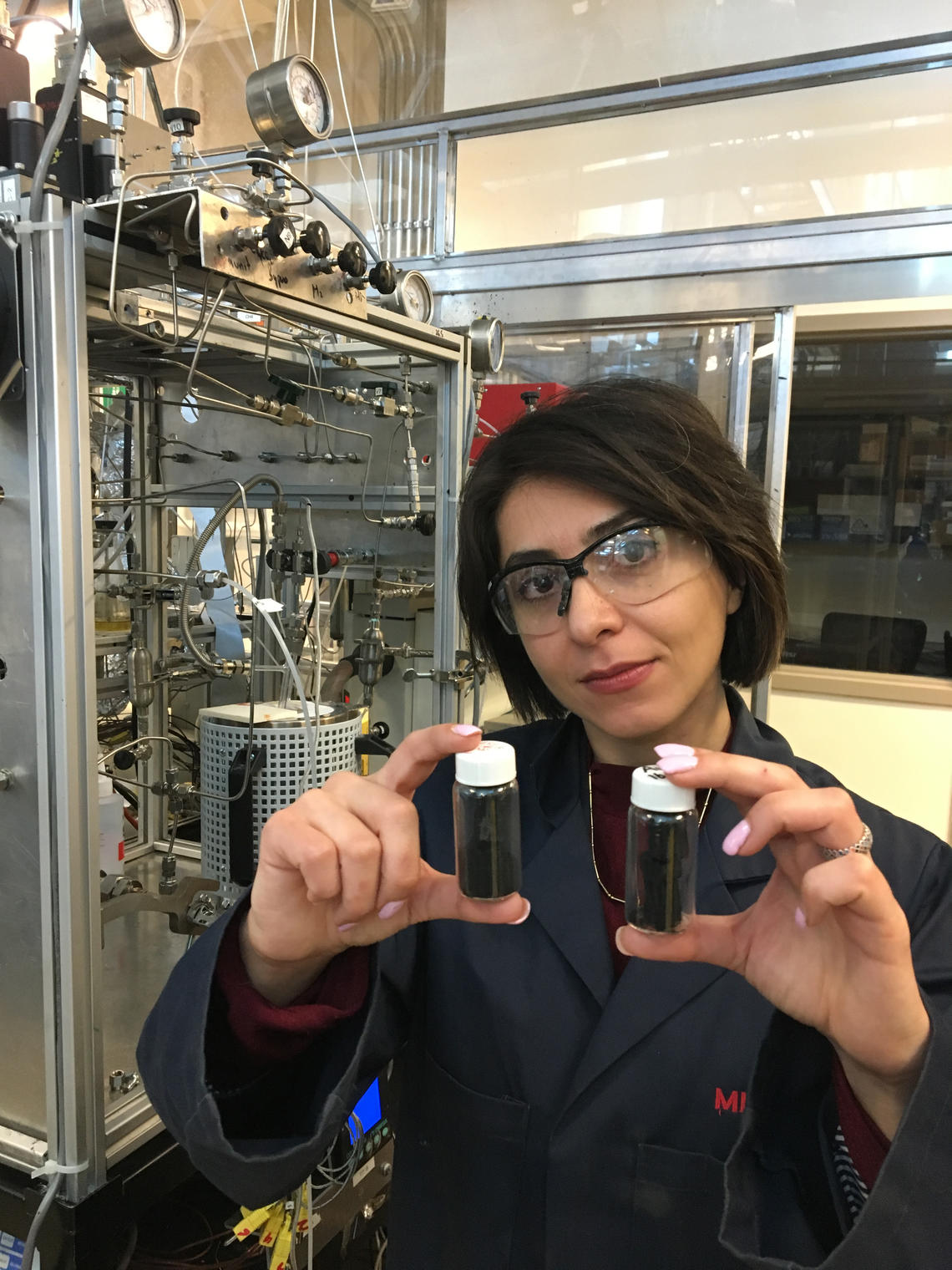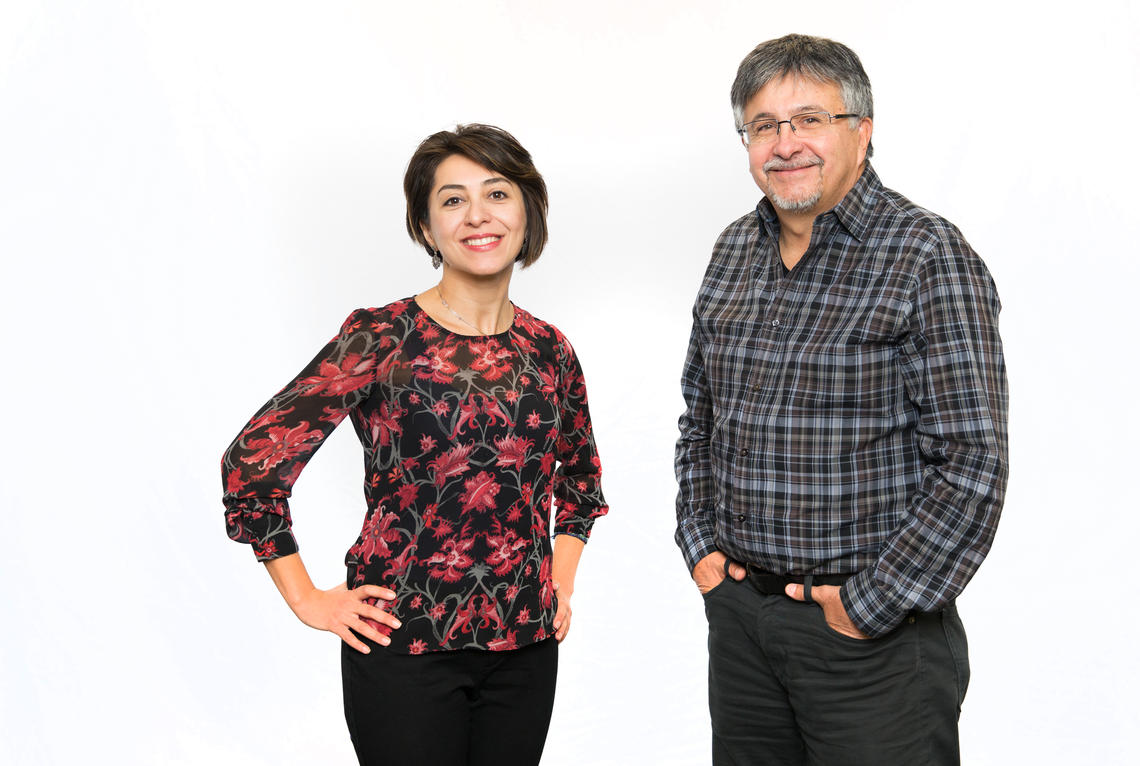May 31, 2019
Breakthrough earns UCalgary venture a place at Creative Destruction Lab Super Session

Mina Zarabian co-formulated an economical way of turning greenhouse gases into carbon nanofibres.
Michael Platt, Schulich School of Engineering
“Eureka!” is the part Mina Zarabian has mastered.
The reason for her enthusiasm: Being named a graduate of this year’s Creative Destruction Lab Rockies (CDL) Energy cohort. Now Dr. Zarabian, PhD, can add marketing expertise and entrepreneurship to her list of accomplishments. An energy and environment engineering researcher in the Schulich School of Engineering, Zarabian and her partner developed breakthrough carbon-conversion technology using greenhouse gases.
“Each goal set for us at CDL increases our understanding of how to make this enterprise work, and how to take it out of the laboratory and into the real world,” explains Zarabian.
Next up, the CDL Super Session
And CDL graduates get a chance to show off. Zarabian and Dr. Pedro Pereira-Almao, PhD, are off to the CDL Super Session in Toronto on June 12 and 13, where the graduating early-stage tech companies are placed in the spotlight.
“It’s wonderful to take part, and we’re looking forward to it,” says Pereira-Almao, professor of chemical and petroleum engineering at the University of Calgary.
For Zarabian, completing CDL has changed the way she looks at her carbon technology, and she says the experience will help spur their research into commercial production. “The whole experience has been incredibly valuable, and it’s been an honour to take part in CDL,” she says.
Making carbon nanofibres from greenhouse gases
Launched last year by the University of Calgary’s Haskayne School of Business, CDL is a milestone mentoring and financing program for massively scalable science-based companies.
The program was a perfect fit for Pereira-Almao, Zarabian, and Carbonova Corp., the company they’ve founded as a commercial vehicle for research that’s both environmentally promising and potentially profitable.

Mina Zarabian and Pedro Pereira-Almao take part in interview day in the Creative Destruction Lab.
Adrian Shellard, for Haskayne School of Business
The Schulich School of Engineering professor and his former student have formulated an economical way of turning greenhouse gases into valuable carbon nanofibers using waste heat as a power source, and the research has already made international headlines.
Strong, lightweight and useful
As partners in Carbonova Corp., they will prevent carbon dioxide and methane from entering the atmosphere, while at the same time producing a strong, lightweight material that can be used almost anywhere metal or plastic is used now.
“This is a process that turns natural gas and CO2, carbon dioxide, both known as greenhouse gases, into solid carbon nanofibres that can be sold in a brick or powder for a lot of industries that utilize them," Zarabian recently told the Canadian Press.
"It can be used everywhere that you can imagine ... transportation vehicles to make them lighter and more durable so they can be more fuel efficient."
It’s a process so in-step with Alberta’s environmentally aware energy future that Premier Jason Kenney has tweeted about the research — but great ideas don’t always result in great commercial innovations.
CDL provides business acumen
That’s why CDL is so valuable in learning how to move research innovations to market. CDL is not a competition, but rather a program that helps commercialize big science technologies into commercial products, by tapping into the experience of innovators and entrepreneurs who have gone before them.
At each CDL Session, ventures meet with the CDL Mentors to discuss three key objectives the venture should work to achieve before the next session, eight weeks later. Those that meet the challenge and gain support from CDL Mentors continue on in the program.
Other UCalgary ventures in the second cohort of the CDL-Rockies program included a blood pressure monitoring device, a pellet form of bitumen, an absorbable brain stent, and a non-invasive intestine microbiome collector.
CDL-Rockies was established through the university’s ongoing fundraising campaign, Energize: The Campaign for Eyes High, which is targeting $1.3 billion in support by 2020. The campaign, currently at more than 95 per cent of its overall goal, is helping the university invest in new student experiences, innovation in teaching and learning, and fostering deeper connections with the university.
